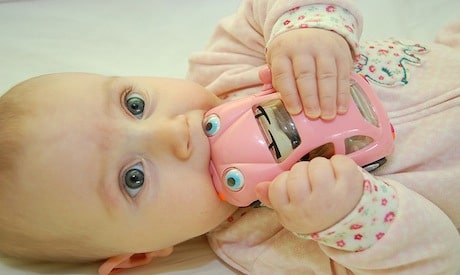
If you haven't heard the news about BPA (bisphenol-A), it's a highly controversial chemical used in a number of products. It's been banned or strictly regulated in countries including China, France, and Canada. And, finally, the U.S. has banned it from infant bottles and sippy cups. But because it isn't a food ingredient and doesn't have to be labeled, how can you know where it's hiding?
In this respect, BPA is a bit like another controversial unlabeled health risk: genetically modified foods. The only way to know if your foods are GMO-free is to look for labels that say so. (And some even mislead with that statement as I discuss in my expose on 'genewashing'.)
The same is true for BPA. Manufacturers that go out of their way to eliminate BPA often indicate this on the packaging. But since the product is so common, it's likely you're getting exposed to it despite your best efforts to avoid it.
BPA is an endocrine disruptor that mimics human hormones. This causes a whole bunch of problems in the body including obesity, early onset puberty, fertility issues, immune problems and even certain types of cancer.
Avoid BPA by knowing where it's hiding.
Here are five of the most common sources:
1. Canned foods
This includes canned sodas and beers as well. BPA is used in the can lining, and highly acidic or oil-based foods are more likely to pull the chemical out of the liner, but all foods in BPA containers are at risk of contamination. Avoid canned products or opt for those that are BPA-free. A good indicator is the #7 recycling imprint on the bottom of products. Look for alternatives in jars, tetra paks, or make your own from scratch.
2. Old Tupperware
If you have Tupperware made before March 2010, you might want to consider replacing it. After 60 years of producing its patented food containers with the chemical, the company finally switched to BPA-free plastics. Tupperware is often handed down from generation to generation, but do yourself (and the next generation) a favor and opt for glass or ceramic storage instead.
3. Ditch the register receipt
That's right, your register receipt most likely contains BPA. Those soft receipts that seem kind of silky? That's BPA, and it's volatile in that state. If you do need your receipt, have it tossed in your bag, and make sure you touch it as little as possible.
4. Dental work
As if you didn't already hate the dentist enough, the American Dental Association has this to say about BPA: "BPA might be found in dental composites and sealants for two reasons: 1) it’s a by-product of other ingredients in dental composites and sealants that have degraded, and; 2) it’s a trace material left-over from the manufacture of other ingredients used in dental composites and sealants. ADA research, confirmed by direct communications from dental material manufacturers, indicates that BPA is not used as a formula ingredient in dental materials." There are plenty of reasons to look for a holistic dentist, and you can certainly add this to the list. Talk with your dentist before major procedures about the risks of BPA.
5. Children's toys
Plastic is the go-to choice for children's toys and products because they don't shatter and can take a bit of abuse. But they're also one of the most common places to find BPA. Fortunately, like with food, many manufacturers are now offering BPA-free products. You can also look for alternatives to plastic altogether, such as wood, rubber, or fabric.
Image: Telstar Logistics




